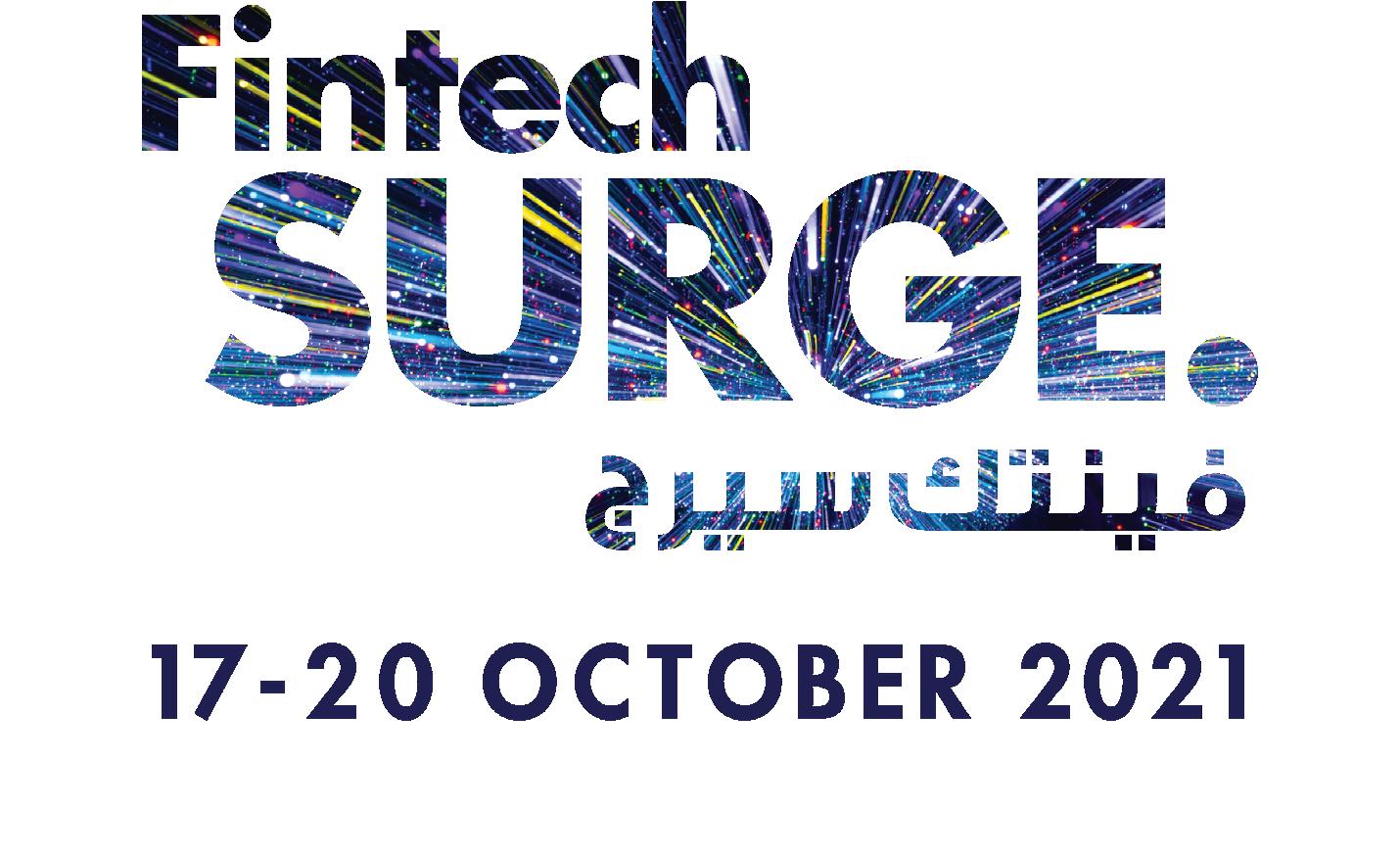
33 minute read
Cashless Dubai Initiative reports major progress
by meafinance
As part of the Fintech Surge interview series for the Future Blockchain Summit from 17 to 20 October at the Dubai World Trade Centre, for which MEA Finance is a Media Partner, Meera Alshaikh, Head of International Relations and Partnerships, Smart Dubai Department, talks about the myriad benefits for both the public and private sector as it transitions to a cashless society, spurred on by the government response to the Covid-19 pandemic and its vision to develop the emirate as a Smart City
Meera Alshaikh, Head of International Relations and Partnerships, Smart Dubai Department
Advertisement
By Oscar Wendel, Senior Content Manager of Fintech Surge taking place on October 17 – 20 at Dubai World Trade Centre
The Cashless Dubai Initiative being spearheaded by the Government of Dubai is bearing fruit after an intensive six to eight months, reports Meera Alshaikh, Head of International Relations and Partnerships, Smart Dubai Department. The initiative kicked off in later 2019, quickly gaining prominence due to the impact of Covid-19.
“The shift towards a cashless society has many important returns for cities and countries and has gained enormous importance in recent times, as cashless payments are perceived as a safer way to limit the spread of the coronavirus,” comments Alshaikh.
A recent survey by global public opinion and data company YouGov has made it possible to quantify the impact of Covid-19 on payments and shopping behaviour: An astonishing 71% of retail consumers prefer digital channels over cash and 61% of e-commerce consumers use cash and use cards and wallets more than the cash-on-delivery option online.
In addition, a 2017 report by Visa on the potential benefits of the cashless society estimate an AED1.88 billion increase in government revenue, an AED2.2 billion increase in individual savings and an AED5.5 billion increase in business revenue in Dubai alone.
“That, of course, is in addition to a wide range of catalytic benefits, such as wage growth and jobs created. So, to that extent, and in line with the leadership’s vision to position Dubai as one of the smartest and happiest cities on earth, the government formed what is now known as the Cashless Dubai Initiative,” explains Alshaikh.
The Cashless Dubai Working Group has been tasked to develop and implement a roadmap for a seamless transition towards a cashless society in the emirate. The working group comprises Directors General from all relevant local authorities, as well as related stakeholders such as major banks. The initiative forms part of the Smart Dubai drive by the government to transform the emirate into a preeminent global Smart City.
The working group has, to date, identified six major focus areas, namely government services, peerto-peer transactions, retail and related services, the unbanked and underbanked population and tourism. A major concern being addressed in tandem is the issue of economic security and cybercrime. “There are many enabling factors to ensure we achieve success in these focus areas, such as having an agile and enabling environment for consumer protection,” points out Alshaikh.
Collaboration between the public and private sector, especially start-ups, will be critical to support the initiative to develop fast and reliable technology for such a cashless transition. Innovation will be driven by crowd-sourcing, with the ultimate goal to improve the economic competitiveness of Dubai and the entire region.
“We have had extensive brainstorming sessions, culminating in various initiatives currently in the market as we look to enhance the existing solutions so as to come up with more innovative ideas to take them forward,” highlights Alshaikh.
These include a unified payments network in collaboration with the Department of Economic Development in Dubai to enable start-ups to plug their APIs into a unified network for the benefit of both consumers and businesses. “Any companies with APIs that are ready to be added can reach out to us and we can connect them with the team working to take this initiative forward,” reveals Alshaikh.
In terms of the future, one of the main goals is to create a universal opensource platform that both companies and individuals can simply plug into. The implications for tourism in particular are far-reaching, especially as it will allow international tourists to Dubai to integrate seamlessly with the cashless society. Another low-hanging fruit for a
painless transition to a cashless society is to look at how the Roads & Transport Authority (RTA) can integrate with Smart Dubai.
Alshaikh points out that the RTA’s Nol e-purse system is already a man enabler of what the initiative hopes to achieve over the next few years. “It is all about generating opportunities and ensuring convenience. If you are an individual who is not open to the idea of a cashless society, then we also want to strive to provide you with the option to use your local currency.”
It is this flexibility and adaptability that is fast accelerating the transition to a cashless society in Dubai, and also setting a global benchmark in terms of its regulation and implementation.

“We are constantly looking at global best practice in this regard and how to apply it locally. We are very excited at what we have been able to achieve in a short period. Many countries have been working on such a framework for far longer with fewer tangible results, so we are very optimistic about our achievements to date and our future goals,” concludes Alshaikh.
A Shifting Landscape

The GCC region digital payments volumes have soared since the outbreak of the COVID-19 pandemic, reportedly generating as much as 10 years’ worth of growth across B2C, B2B, and P2P spaces in just over 12 months. “Payment services providers including banks are leveraging on these adoption rates as an impetus to accelerate digital projects, but significant challenges and risks remain,” said PwC.
Though the outbreak of the pandemic presented a set of unprecedented challenges to the global financial services sector, it also accelerated and strengthened the adoption of contactless payment solutions, a trend that was already in full throttle across the region.
According to a consumer survey that was conducted by Mastercard in the Mideast region, 70% of respondents said that they are using some form of contactless payment method since the outbreak of coronavirus due to safety concerns. 81% of the respondents said that they would continue using digital payments post-pandemic.
“The speed of change in the global payments landscape is accelerating. It is therefore important for banks such as Citi to engage more proactively with fintechs,” said Dave Aldred Head of Treasury and Trade at Citi for MENA. The advancement in the payments sector across the Gulf region is being driven by the growth in e-commerce and associated services, the shift from cash payments amid concerns that money is a vector of COVID-19 and government support.
“The world of payments is going through a period of incredible change, driven by technological innovation and evolving customer expectations, and intensified even further with the challenges of a global pandemic,” said Onur Ozan Head of Middle East, North Africa and Turkey at SWIFT. The ability of payments service providers to deliver seamless and instant payments service 24/7 is key for all players to remain relevant in this changing landscape and globally, many domestic market infrastructures have begun delivering instant payments.
The next generation of digital payments vehicles will not only be embedded within smart devices, but they will also have to offer increased securitization, such as tokenization and strong authentication.
Scaling up
Globally, payments remain one of the best performing financial services products but unfortunately for banks – traditionally the main providers of payments services – this momentum is no longer extending to most of them especially under the current operating conditions. Technology giants, fintechs, merchants and social media giants have all created their digital payment offerings.
For banks to maintain a competitive edge in the next normal, McKinsey said, “Success will depend on thoughtfully assessing capabilities, determining the role of payments in market strategies, and appropriately aligning payments operations to achieve the required performance improvements.”
The nexus between banks and digital payments service providers is no longer about competition but is now about collaboration through adopting cutting-edge technology services to meet customer needs and expectations.
Regional banks are leading or participating in several accelerators, incubators, and training programs to advance their access to financial technologies. For fintechs and startups, such partnerships provide easy access to resources, data, funding, space, and networking opportunities to test and showcase their prototypes.
These types of collaborations are a valuable addition to the internal innovation programs of the financial institutions that seek to increase and maintain their customer relevance.
“Carving out the payments business allows a more flexible approach to growth while also establishing a currency that makes subsequent consolidation possible, as carve-outs can tap into the higher valuation afforded payments companies,” said McKinsey.
Treating payments as a standalone entity for example in the case of Emirates NBD’s Network International allows for the expansion of services across the financial services sector and opens the service to a broader array of customers, thereby driving scale and improving profitability.
In April, First Abu Dhabi Bank (FAB) completed the carve-out of its existing payments division into a stand-alone operational entity called ‘Magnati’. Aside from its payment services, Magnati seeks to provide enhanced capabilities to partner with fintechs on product and service innovation.
Though GCC banks have made significant progress in their digital transformation journey compared to their peers in the emerging markets, the fact that payments represent the most frequent touchpoints between a bank and its customers makes digital investment in the sector more important than ever.
“Consumer behavior has changed over the past few years. Adoption of new technologies has raised the bar of user expectations and pushed operators to create new products that are not just increasingly innovative, but also easy to use,” Devid Jegerson, Head of Customer Experience and Platform Development at National Bank of Fujairah said in an exclusive interview MEAFinance.
Ernst & Young said that the payments landscape is experiencing a wave of innovation, driven by technological advancement and consumer desire for on-demand banking and payment solutions.
Digital payments, once a convenience, have become a necessity in these times, said PwC. The emergence of new technologies is also offering regional banks a window to be more innovative and efficient in service delivery, but it is also opening the door to new entrants such as fintechs, global retail giants as well as card networks and neobanks.
Fostering growth
Across the Gulf region, the pandemic and its economic fallout has undoubtedly accelerated a string of existing trends in both consumer and business behaviors
while introducing new developments that saw the use of digital payment methods surpassing the use of cash and debit cards.
“The COVID-19 pandemic accelerated the diversification of instruments already underway while encouraging remote, contactless modes of payment,” said Jegerson.
As the payments market expands, customer experience is becoming the prime competitive differentiator, said Accenture. To maintain a competitive edge in a crowded market or adapt to changing operating environment, payment services providers across the GCC must understand the needs and expectations of their customer base.
The competition between the operators in the payment sector can be considered as a battle to achieve competitive advantages using precise strategies to obtain favorable positions.
The ongoing shifts toward e-commerce, digital payments (including contactless), instant payments, and cash displacement have all been significantly boosted in the past six months, said McKinsey. The COVID-related restrictions that were introduced by regional governments to curb the spread of coronavirus shifted consumer and business behavior towards e-commerce platforms making it imperative for financial service providers to provide seamless payment solutions. “Increasing convergence and integration between e-commerce and mobile technology have radically changed
the shape of the payments marketplace,” said PwC.
A survey conducted by PwC revealed that around 53% of regional retail firms expanded their digital business with Saudi Arabia’s Bin Dawood and Danube benefiting from this surge as their average sales soared by 200% while UAE’s Carrefour reported a 59% leap in online sales.
The growth in the Mideast payments industry can also be attributed to regional governments’ support that is seeing banks leveraging these adoption rates to advance their digital transformation strategies.
GCC countries are spearheading different digital payments initiatives such as Oman’s Mobile Payments Clearing and Settlement System, UAE’s e-Dirham, DubaiPay, BenefitPay in Bahrain and Saudi Arabia’s Sarie – all of which are meant to enable service providers and
DRIVEN BY CHANGES IN DIGITAL TECHNOLOGY, CONSUMER DEMAND AND COMPETITIVE FORCES, THE WAY PEOPLE MAKE PAYMENTS IS EVOLVING FASTER THAN ANY OTHER AREA OF FINANCIAL SERVICES.
– Ernst & Young
– McKinsey
government entities to offer payment facilities around the clock.
“The payments world is transitioning to digital-first and there’s no turning back,” said EY.
Similarly, seamless payment solutions such as digital wallets and “pay” buttons such as FAB’s Payit, Qatar National Bank’s QPay, stcPay in Saudi Arabia, UAE’s Empay as well as Samsung, Google and Apple Pay all remove the hassle of entering payment details for each transaction. “Payments providers, both old and new have been stepping up and embracing digitization to address customer demands for rich capabilities, simplicity and increased predictability, all while navigating the challenges posed by cost pressures, regulatory changes and legacy technology,” Ozan added.
McKinsey said that higher limits for contactless payments at the height of the pandemic also triggered rising adoption rates across the globe, making inroads beyond debit’s typical domain of smaller-value transactions.
Other factors driving the success of digital payment methods across the GCC includes their popularity among small business and startups, banks’ quest to meet customer expectations, increase efficiency, accelerate growth and cutback operational risk.
Boston Consulting Group and Swift projected that digital payments revenues globally could hit the $1.8 trillion mark by 2024, from $1.5 trillion in 2019, lifted by the continued transition away from cash, sustained strong growth in e-commerce and electronic transactions, and greater innovation.
Security & data privacy risk
Though the use of seamless payments across the region exploded in popularity last year following the outbreak of the pandemic, the increase in their adoption can also be credited to how they are deemed a secure way of settling payments compared to fiat currency.
Due to cybersecurity concerns in the payments industry, EY projected that there will be a wider deployment of biometrics, click-to-pay and other tokenization technologies, as well as behavioral analytics, to enhance security.
Contactless debit/credit cards use a computer chip and a tiny antenna that establishes a connection with the point-of-sale system when making a payment. McAfee said that the connection between a card and a POS is through tokenization – the process of converting meaningful data, such as an account number, into a token that has no meaningful value if breached. Mobile payment services such as Samsung, Apple and Google Pay uses near-field communication (NFC), which is also a much safer way of settling payments.
American consultant firm Kearney said that the past decade has seen digital payment solutions expanding from using a credit card online to tapping a mobile device, entering a phone number, scanning a QR code, using an instant messenger app, and even using face recognition technology during checkout.
ResearchAndMarkets.com noted that consumers are trying out new payment methods while purchasing from e-commerce websites and favor those methods that have the strongest protection against fraud losses.
However, just like any financial technology, the payments sector is not immune to mobile security and data privacy risks. The explosion in digital payment options together with skyrocketing adoption across the region was met with a surge in cybercriminal activity as hackers are becoming more sophisticated and aggressive, making occasional headlines by stealing customer data.
KPMG stated that the proliferation of digital channels following the outbreak of the pandemic has also led to increased cyber-risk exposure. Cybercrime and malicious hacking cases have intensified since the outbreak of the pandemic.
While non-security concerns such as preference for cash are a hindrance to migration to seamless payment methods, addressing security concerns being raised by consumers creates the largest migration opportunity.
Citi’s Aldred, said, “Ensuring that robust platforms are in place to manage client flows in contingency environments are extremely important and reinforce the importance of scale, network and technology investment strategy.”
However, the situation is unlikely to change for the better in the future due to the use of third-party vendors, evolving sophisticated and complex technologies as well as cross-border data exchanges, the increased use of mobile technologies by customers and the heightened crossborder information security threats.
Modern data protection wherever and whenever you need it.

Making New Payments
With the increase in new methods, growing cross currency transactions and the continuing pressure for speed, Dave Aldred Head of Treasury and Trade at Citi for MENA, highlights the demands of the regions users of payments services, and the developments and concerns that we can expect will arise as this sector takes shape in the coming years.
How are you adapting or competing in the payments arena to ensure these services remain profitable?

Citi continues to make significant investment in its regional and global payment capabilities. This is important given the fiercely competitive environment from both traditional banks and newer entrants. This investment is critical to ensure that Citi has a clear value proposition and relevance for our clients given the increasing trends on digitisation, globalisation, e-commerce which requires platforms to manage scale given the resultant miniaturisation of payments and new client selling models. As a result, developing standards and scalability on APIs, increasing connectivity to wallets, making payments and foreign exchange conversion frictionless and connecting the new financial market infrastructure such as instant payments or e-billing are important areas to invest in and ensure a market leading capability. For a long time, the challenge on making cash receivables more efficient has been a priority for the majority of banks. Digitisation is making this more of a reality and alternatives to traditional methods of doing business (e.g., cash and cheques) are becoming available. Clients are also operating in a more global marketplace and the importance of offering seamless cross currency payments is very much at the fore.
The speed of change in the global payments landscape is accelerating. It is therefore important for banks like to Citi to engage more proactively with fintechs. This is already part of Citi’s culture and whilst fintech companies are competitors they are also our clients and partners. As a result of this
Dave Aldred Head of Treasury and Trade at Citi for MENA
collaboration the speed to market, scale and commercialisation has increased significantly. So, in summary, leveraging technology and Citi’s network combined with new payment schemes (e.g., faster payments), connectivity with digital wallets and collaboration with strategic partners is helping to grow market share and drive profitability. Spring by Citi is a great example of where we are working with strategic partners to enhance our client’s ability to collect from consumers across multiple payment channels.
What in your mind is the greatest reason for regular non-commercial cross-border payments made in the Middle East and why?
Outside of commercial flows and treasury payments, the largest flow is probably remittances, which constitute a payment market of 60-55$bn per annum. The remittance market exists given the relatively high number of expats working in the MENA region. Additionally, religious travel and multilateral agency payment volumes are also significant.
Do you foresee blockchain or even crypto currencies taking a greater role in trade finance and supply chain payments?
Absolutely. Where there is risk in a business flow the case for blockchain solutions is strong. Citi, through our network of innovation labs, is working with partners and ecosystems to develop blockchain solutions that will eventually become mainstream. A good example is Komgo where Citi and a number of other partners are working to digitalise the trade and commodities finance sector through a blockchain based open platform. The signs are promising, and I would expect blockchain to become key element of trade solutions in the coming years.
Crypto currencies are also seeing a growing amount of interest with Central Banks developing digital strategies and policies. In the coming years, Central Bank Digital Currency (CBDC) could be issued in either ‘retail’ or ‘wholesale’ varieties and could be expressed as either tokens or accounts. CBDC is a claim on the central bank, i.e., a liability on the balance sheet of the central bank. It is redeemable at par value on demand in national currency units. While regulatory interest in CBDC was stimulated by the development of bigtech stablecoins, some argue that they should be represented through the more familiar technology of accounts. The regulation of stablecoins has yet to be determined and it is a real test of whether regulators will adopt a technologically neutral approach. It could be argued that stablecoins are (or should be) nothing more than E-money expressed as tokens. If this were the case then all of the regulations applying to E-money would apply to stablecoins: they could not pay interest, they would be fully collateralized, they would be direct claims on the stablecoin issuer, and the user would expect re-deemability at par value on demand in national currency.
The platform economy exhibits ‘winner takes all’ tendencies but in the case of digital money there is probably space for a number of contenders. After all, new roads create more traffic, not less.
The digital payments market is likely to grow significantly. The real question for regulators is to ensure that the competition between different formats for digital money proceeds on a level playing field.
Without doubt the pandemic has accelerated digital transformation globally. Payments are no exception. The MENA region was already on a trajectory of digital payment growth and this has been further fuelled by respective government strategies and changing client sales models. In a world that is rapidly becoming a platform economy or hyper connected where 24/7 or “always on” are becoming normal, it is important to provide connectivity and choice for payments for our clients. Across MENA we are witnessing the implementation of faster or instant payments schemes (e.g., Bahrain, UAE, Morocco, Jordan & Pakistan) as well as e-billing platforms such as e-fawateer. This progress is helping to transform the way governments and organisations conduct business and drives efficiency through digitisation. E-commerce and supply chain stability through the more efficiency and quicker settlement of payments.
However, digital progress is not just limited to payments. A banks’ engagement with client is also critical and investment in areas such as digital on-boarding, self-servicing, digital signatures, online ERP file testing are just some areas
that are benefiting from investments in new technology. Let us also not forget another important lesson from the pandemic that has demonstrated the importance of technology, and that is operational resilience and risk management. Ensuring that robust platforms are in place to manage client flows in contingency environments are extremely important and reinforce the importance of scale, network and technology investment strategy.
The main concerns for me remain around cyber security and regulatory compliance. Given Citi’s global network and role as globally systemic important bank the need to execute payments efficiently, safely and adhering to regulatory frameworks is critical. Digitisation is, and has to continue to, play a key role here given the volumes of payments involved, the global reach of Citi’s network and the complexity of our clients’ operations.
The swift evolution in payments
Onur Ozan Head of Middle East, North Africa and Turkey at SWIFT talks about the unprecedented change happening in the payments space and how the transformation of the SWIFT platform will enable instant, frictionless and transparent payments, with end-to-end integrity and global reach

Onur Ozan Head of Middle East, North Africa and Turkey at SWIFT
How are you adapting in the payments arena to ensure that your service remains competitive?
The world of payments is going through a period of incredible change, driven by technological innovation and evolving customer expectations, and intensified even further with the challenges of a global pandemic. New competition, propelled by innovative technology, is disrupting the financial industry, putting existing business models increasingly under threat.
As a trusted infrastructure provider for over 11,000 institutions, we are evolving alongside our community to meet those challenges. Over the past few years, the SWIFT community has been on a journey to radically improve the experience of sending cross-border payments with our SWIFT gpi initiative.
There has been rapid acceptance, with more than 4,200 financial institutions, and 80 market infrastructures currently enabled. In 2020 gpi payments worth US$440 billion were processed daily via gpi, representing more than 75% of all cross-border (MT103) messages sent over SWIFT. Nearly 100% of gpi crossborder payments are credited to the beneficiary’s account within 24 hours, while 56% reach their final destination within just 30 minutes. In the Middle East, over 200 financial institutions have joined SWIFT gpi, and nearly 80 are live on the service.
The foundations we have laid with gpi – end-to-end transparency, better quality payments data, final confirmation with the beneficiary – have set the building blocks for us to take things to the next level.
Therefore, over the next two years and beyond, we’re embarking on an exciting journey to enable instant, frictionless and transparent payments, with end-toend integrity and global reach. And the entire process will be driven by smart data, enabling the layering of mutualised services on top, which work for financial institutions today and tomorrow. This will unlock huge opportunities for the payments community. For customers in the Middle East - a strategic trading, business and financial hub - this will open up further opportunities to compete in the global marketplace.
To help us achieve it, we are transforming the SWIFT platform based on the concept of transaction management. This new approach will put the business transaction at the centre. The platform will provide a set of common transaction processing services, such as prevalidation of essential data, sanctions screening, fraud detection, data analytics, transaction tracking and exception case management – mutualising capabilities that today are typically provided, and invested in, by each financial institution individually. By bringing together data and common services, we aim to significantly improve end-to-end efficiency and reduce total costs, while bringing new business value to end customers with faster, more reliable transactions and better, richer data.
What is next for SWIFT and the payments community?
We believe the global customer demand to be able to ‘pay and be paid in realtime’ is the new norm. The adoption and usage of instant payments continues to accelerate, especially during this Covid19 pandemic. According to the FIS 2020 report, Flavours for Fast, 56 countries are already live with instant payments.
Speed has become a given for domestic payments as most of these systems are functioning mainly on a domestic level. The next step of the journey to enable
seamless account-to account payments on a global scale by to connecting these different instant payment systems with each other. This is what we are aiming to achieve with gpi instant.
In addition to our plans for gpi instant, we are also developing a cross-border payment solution for SME & Consumer low-value payments to enable banks to offer easy, fast, predictable and low-cost cross-border payments to these fastexpanding customer segments.
Can you tell us more about those initiatives and what this means for market participants? What are the key benefits?
With gpi instant our aim is to create links between the domestic and regional systems to streamline account-toaccount payments.
Having successfully trialled gpi instant with several domestic real-time payments infrastructures around the world, in December last year SWIFT gpi Instant gained its first live link in the UK with customers from Lloyds Banking Group now being able to remit instant cross-border payments through Lloyds via the UK Faster Payments system. And most recently we connected gpi Instant to the local instant payment system in India. We are also collaborating with market infrastructures in the Middle East to further develop the integration between domestic and regional systems.
The more domestic instant payment systems we can link gpi to, the more crossborder payments will become instant end-to-end, given that at least 35% of international payments have a domestic leg involved, which makes interoperability and co-operation crucial. In addition to gpi Instant, we are also working with a group of 27 financial institutions around the world to enable consumers and SMEs to benefit from fast, predictable payments, with costs and processing times known upfront, and real-time status available to both originator and beneficiary customers via their financial institutions. This will allow customers to make a payment directly from their bank account to any account anywhere in the world, with certainty and predictability. We are making this possible by leveraging tools within our platform model, but also through collaboration between financial institutions. This is significant not only for end users but gives many financial institutions a powerful value proposition to grow their crossborder payments business in the booming consumer payments space as well. Today we are in the pilot phase, with a planned go-live later this year.
Both initiatives are key milestones on our journey towards instant and frictionless cross-border transactions, from account to account, anywhere in the world.
The pandemic has brought with it public health crises, economic upheaval and widespread uncertainty. It has forced businesses to recalibrate and reprioritise as they adapt to slower economic growth and accelerating technological change – and the payments industry is no exception.
However, even before Covid-19, our industry was already undergoing a major transformation, driven mainly by a shift in customer expectations, evolving regulation and new technology. Payments providers, both old and new have been stepping up and embracing digitisation to address customer demands for rich capabilities, simplicity and increased predictability, all while navigating the challenges posed by cost pressures, regulatory changes and legacy technology.
The Covid-19 crisis is clearly propelling a significant acceleration in the digitisation of the global economy, and the financial services industry needs to support this. It means that money and payments need to be fully digital. This has already been happening for some time with the growth of e-commerce and electronic payments but now this process is really accelerating.
SWIFT is a proven leader in driving forward digitisation of financial services and we fully intend to continue. That is why we are rolling out a new strategy to further support our members with new capabilities for payments and securities in a digital economy.
Increased customer expectations around speed and transparency are driving new changes to traditional banking models. This new paradigm has prompted changes that require careful, responsible innovation and flexibility. New technologies can create new opportunities, but they must be assessed carefully, always bearing
in mind the demands of compliance and the need to maintain the highest levels of security and resiliency. This is something we are acutely conscious of as we develop new solutions. As we look ahead, we have plans to build a smarter, faster, better digital platform that goes beyond today’s capabilities to facilitate the whole transaction management process. We seek to move towards being a single trusted partner in every area of transactions.
Easy Payments Plans
As distanced business sectors converge to provide payment options; banks must constantly reassess their offerings. Devid Jegerson from the National Bank of Fujairah describes the factors bringing change to payments and the benefits these new methods can deliver
How are you adapting or competing in the payments arena to ensure these service remains profitable?
Until recently, the banking sector dominated the electronic payments market for about 50 years. In recent years, the advent of Fintech has precipitated the evolution of banking regulations, bringing about a new era of banking innovation, especially in relation to payment instruments.
Consumer behavior has also changed over the past few years. Adoption of new technologies has raised the bar of user expectations and pushed operators to create new products that are not just increasingly innovative, but also easy to use.
The entry of new operators has caused an increase in the complexity of the competitive market environment. In particular, with the launch of new forms of electronic payment and especially e-payment, we have seen the evolution of payments and the introduction of new offers and services entering the market: 1. Telecommunication companies enhanced their products by offering new integrated services (e.g., current payment systems) 2. Large distribution chains interested in enhancing the relationship with their customers through payment systems capable of retaining customers (some largescale distribution companies have already experimented with co-branded payment tools with traditional financial operators) 3. Utility suppliers (e.g., ticket offices, local or national transport) interested in facilitating the use of their services by offering innovative payment systems
Public administrations, interested in entering the payment systems market to facilitate interaction between users and the relevant administration, has in essence led to a convergence between different sectors, where the payments market becomes an enabling factor across heterogeneous sectors. Once distant and separate market sectors, such as banking, telecommunications, large distribution and utilities, today tend to converge in order to meet the needs expressed by end-users (buyers and merchants).
The competition between the operators in the payment sector can be considered as a battle to achieve competitive advantages using precise

Devid Jegerson - Head of Customer Experience and Platform Development at National Bank of Fujairah
strategies to obtain favorable positions. At NBF, it is essential to note that our digital transformation – in payments and beyond – is based on being able to add value to our customers and live up to our promise of being the best financial partner to support their personal and professional needs. As such, we constantly assess and re-assess what we are offering by examining various factors. It is necessary to understand what customers want in order to prepare a product offering that can satisfy their needs. From the consumers’ perspective, these factors usually revolve around security, controllability, and practicality. As for merchants, these factors can be summed up as universal acceptance or the maximisation of the number of potential buyers owning this payment instrument, convenience or minimization of management costs, and security.
What in your mind is the greatest reason for regular non-commercial cross-border payments made in the Middle East and why?
UAE sits at the top of remittances due to its large expat population representing around 90% of its total population. In the previous years, expat remittances from the UAE totaled $44.5 Billion, 75% of which was transferred through money exchange companies with the remainder sent through banks. India, Pakistan and the Philippines, were the top three receiving countries.
From our perspective, a driving force behind innovation is the need for alternative financial solutions to propel financial inclusion with the UAE leading in the payments space. This region boasts an ecosystem that is conducive to FinTech development. Looking at the wider area, roughly 85% of Fintechs in MENA operate in the payments, transfers, and remittances vertical.
Do you foresee Blockchain or even Cryptocurrencies taking a greater role in trade finance and supply chain payments?
This is already happening.
In trade finance, banks facilitate international trade by providing financing to buyers and sellers. However, as the trade war intensifies between the US and countries such as China, banks are looking to reduce some of the risks they take on through technological innovations. Banks are reducing their reliance on antiquated manual processes and digitizing key trade documents, like Letters of Credit (LCs), to reduce cost and improve efficiency. Others are looking to replace the process altogether with longer term applications of Distributed Ledger Technologies (DLTs).
The reasons behind the adoption of Blockchain technology in trade finance is owed to the existing challenges of today’s processes ranging from manual contact creation to usage of multiple platforms leading to high chances of fraud.
As such, Blockchain brings a host of benefits to the trading system, eliminating many of the challenges stakeholders face today: 1. Real-time review: Financial documents linked and accessible through Blockchain are reviewed and approved in real-time, reducing the time it takes to initiate shipment 2. Transparent factoring: Invoices accessed on Blockchain provide a real-time and transparent view into subsequent short-term financing 3. Disintermediation: Banks facilitating trade finance through Blockchain do not require a trusted intermediary to assume risk, eliminating the need for correspondent banks 4. Reduced counterparty risk: Bills of lading are tracked through Blockchain, eliminating the potential for double-spending and potential frauds 5. Decentralised contract execution: As contract terms are met, status is updated on Blockchain in real-time, reducing the time and headcount required to monitor the delivery of goods 6. Proof of ownership: The title available within Blockchain provides transparency into the location and ownership of the goods 7. Automated settlement and reduced transaction fees: Contract terms executed via Smart Contract eliminate the need for correspondent banks and additional transaction fees 8. Regulatory transparency: Regulators are provided with a realtime view of essential documents to assist in enforcement and AML activities
From our experience at NBF with the UAE Trade Connect (UTC), a new nationwide Blockchain platform co-created by Etisalat Digital and seven leading UAE banks, to help financial institutions combat fraud and duplication; we can check invoices with different grades of efficiencies. This means that Corporates and SMEs can complete their transactions quicker while enjoying an elevated customer experience.
UTC’s initial phase focuses on addressing the risks of multiple financing amongst banks and invoice frauds which, if not mitigated, can eventually lead to the weakening of a bank’s balance sheet and in turn, dampen the overall mood of financing to SMEs in the economy. UTC is expected to facilitate increased lending to SMEs to strengthen UAE’s positioning as a central trading hub in the region.
Blockchain-enabled trade networks can benefit all stakeholders by reducing frictions from the logistical and operational inefficiencies across the trade finance value chain.
In the short term, Blockchain would be instrumental in optimising business processes by reducing redundancies and implementation inefficiencies. The longer-term implications of Blockchain technology in trade finance would be more profound and could lead to changes in or complete re-design of existing processes.
The market was already evolving towards diversification of payment instruments for use in specific contexts. These contexts that are not yet fully affected by current payment instruments, such as credit and debit cards, are those involving relatively small payment amounts that are now mostly settled with cash. To cover these contexts, easy and efficient product solutions must be present on the market to become valid substitutes for cash. New technologies and new tools make it possible to store a wide range of personal data. This allows the creation of more personalised payment offers and meeting customer needs in a more defined way. The Covid-19 pandemic accelerated the diversification of instruments already underway while encouraging remote, contactless modes of payment.










